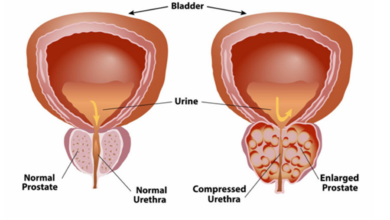Basically, healthcare provider network is a term that refers to various physicians, clinics, pharmacies, nurses, doctors, and other medical entities that are a part of a healthcare plan. Each member of the network is properly verified, allowing them to offer medical services to patients. On the other hand, those who aren’t a part of this network are referred to as “out-of-network providers.”
In this article, we’ll briefly mention the advantages of a network management system, and then we’ll share a few tips on how to create an efficient network.
The main advantages of a provider network
According to Andros, an elite medical service company hailing from New York, creating a network system is a must in modern times. Having a well-designed network simplifies things for everyone involved, from insurance companies to practitioners. Here are a few reasons how you can also benefit from it:
- Fast access to numerous providers
- Reduces overall costs
- More transparency when establishing prices
- Better service for patients
- Enormous competitive advantage
Using a network system is a win-win for insurance companies, ensuring that all medical entities meet their quality standards. Not only that, but by creating a network, you can also cut reimbursement expenses.
7 Steps for creating a quality provider network
While having a well-designed provider network is incredible, it does take some time and effort to establish it. Here are seven steps you need to undertake to create one:
1. Supervise the process
A good network hinges on good leadership. Before even thinking of creating a network, you need to assign roles within the team to ensure that the process is properly supervised. Perhaps the best way an insurance company can go about things is by employing full-time managers whose sole responsibility is to oversee the network.
You can also create committees that can periodically gather and analyze the network’s performance. These experts will assess each medical provider individually to ensure they’re abiding by their high-quality standards. Lastly, the management structure has to pay attention to legal compliance.
2. Include everyone
For a healthcare provider network to be efficient, it needs to have medical experts who specialize in different areas. Besides including top-tier medical staff, it also requires a diverse portfolio of home service providers, rehabilitation centers, and other specialty practices. Furthermore, their clinics should be properly spread across a geographic area and serve different demographic groups.
Through diversity, you can maximize your coverage. Furthermore, this type of inclusion ensures that a patient can receive quality end-to-end care, all while staying within their respective plan.
3. Introduce high-tech solutions
For things to go smoothly, a network needs to rely on a sophisticated IT solution. Given the number and diversity of practitioners and entities within the network, everything needs to be categorized in a proper manner. Among others, an insurance company should keep track of service quality, service costs, internal communication, and other related processes.
Aside from streamlining and monitoring daily activities, IT systems are crucial for other strategic and compliance processes. For example, you should use digital platforms to simplify credentials tracking to ensure all practitioners are still verified.
4. Standardize processes
For a network to reach peak efficiency, all related processes need to be standardized. That way, practitioners will understand what is required from them and how to achieve it. Through standardization, the entire provider network can achieve higher quality while abiding by the payer’s requirements.
For example, an insurance company can dictate how much time an appointment can last, how much a patient can stay in a clinic, and so on. Although introducing these policies and goals might increase the pressure on practitioners, forcing them to work harder, it will ultimately cut costs for both sides while ensuring higher service for patients.
5. Increase performance
The entire concept of a provider network revolves around performance. In fact, for a practitioner or a clinic to be admitted to the system, they need to go through the credentialing process that would ensure they’re fit for the job.
The best way a network can boost its standards is by introducing measurable goals. Each clinic should create a checklist that would guide its practitioners as they provide services to their patients. Besides monitoring doctors’ work firsthand, medical organizations can also obtain feedback from patients to better understand staff performance.
6. Select quality providers
Regardless of all the policies and standards, practitioners are those who can make or break your network. Because of that, you need to pay close attention to every person and business you add. Even if you lack practitioners, you shouldn’t be too hasty to fill the positions with subpar professionals.
To ensure everything’s in order, you need to pay close attention to credentialing. Although this procedure is under clinics’ and hospitals’ purview, you’re the one who makes the last call. During the process, you’ll learn more about each expert’s medical background, education, and previous claims.
7. Simplify claim processing
A medical exam doesn’t end when a patient leaves the office; it ends when the claim is fully processed and the provider is reimbursed. Like all other activities within the network, this process should be streamlined and simplified for maximum efficiency. Furthermore, you might also consider hiring auditors who will monitor everything from a financial standpoint.
Conclusion
All these steps are crucial for ensuring that a provider network is robust enough to fulfill each patient’s expectations. Not only is this kind of system vital for users, but it also rewards practitioners with the best performance. Ultimately, clinics and doctors who keep their noses above the water will always get more clients and, thus, can profit more from these networks.
Although you’d like a generalized network that is well-balanced, you also need to consider different demographic segments. For example, the required services might be significantly different in zones with lots of elderly compared to zones with young couples. On top of that, you also need to consider users’ economic means as it can affect the services they purchase.









